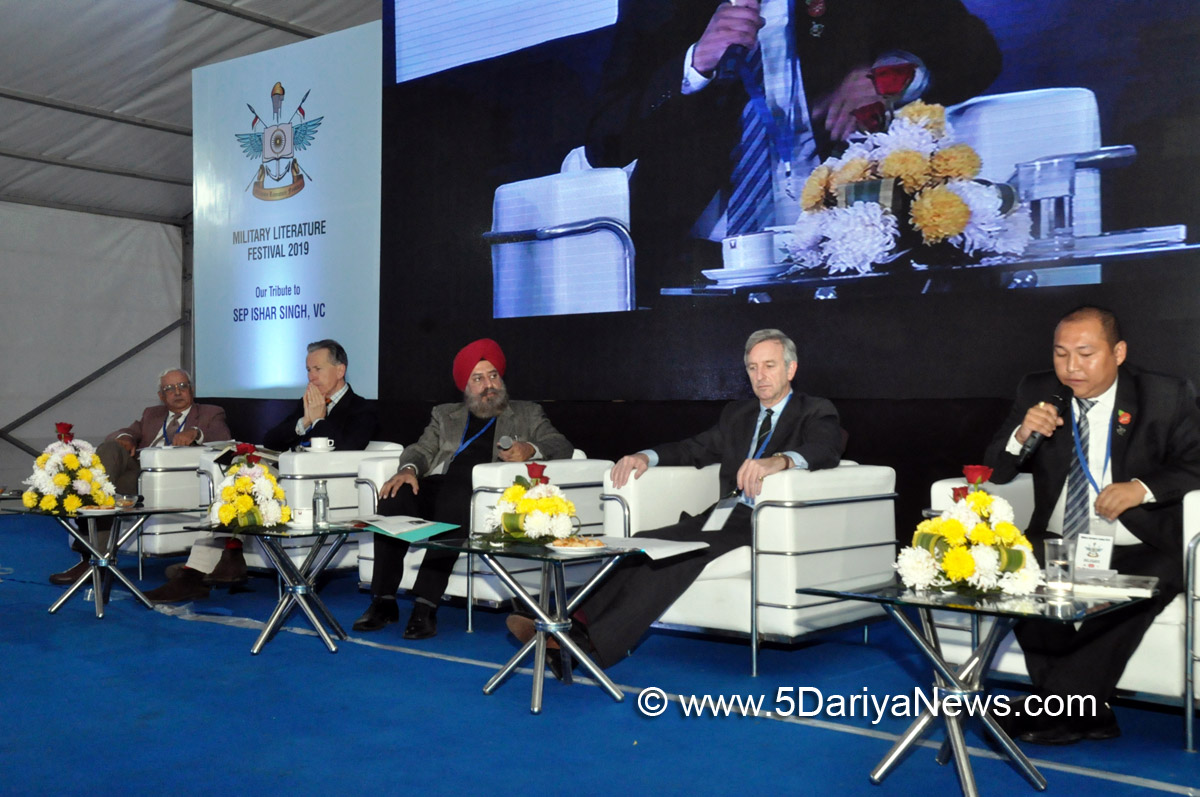
The three stages of battle of Kohima fought during the Second World War was disccused on first day of the Military Literatue Festival. The panelists explained the consequences and reasons behind the battle of Kohima wherein Japan attempted to invade India but the Japenese were forced to retreat.Lieutenant General J.S. Bajwa explained about the battle step by step with photographs of the maps using a projector during the discussion. He said that the battle of Kohima was turning point of the Japenese U-Go (code-name) offensive during the Second World War. The battle was fought in three stages from April-4 to June-22 in 1944 in Kohima wherein Japenese tried to capture Kohima ridge.He said that Japenese intended a spoiling attack against the British IV Corps at Imphal in Manipur but failed due to multiple reasons including lack of proper coordination between Japenese officers. Squadron Leader Rana Chhina moderated the discussion.Colonel Dr Robert Lyman threw light upon the strategy, topography and political aspects of the battle. He said that it was a very fierce battle fought between the Indian-British and Japenese troops. From 18 April to 13 May, British and Indian reinforcements counter-attacked to drive the Japenese from the positions they had captured. Later the Japenese abandoned the ridge but continue to block the Kohima-Imphal road. From May-16 to June-22, both the British and Indian troops pursued the retreating Japenese and got the road re-opened. The battle ended on 22 June by ending the siege of Imphal.Brigadier Allan Mallinson talked about the Indian and British Army’s unique relationship in fighting against the Japenese. He talked about the execution of the plan of attack and thinking of the then chief of British army in London. He also talked about the skillful execution of the attack due to the secrecy of the plan by the Britishers. Sharing the details about the presence of British and Indian forces in Kohima, he said the condition of the Indian-British army changed dramatically from 1942 to 1944 because this location was earlier ignored by the authorities. But later viewing the strategic location they planned to caputre the area. He also talked about the poor relationship between senior army officers of Japan whose lack of coordination resulted in Japenese defeat.Historian Yaiphaba Meetai Kangjam shared the local details and conditions of battle in those days. He said that initially the Japenese adopted the strategy of cordial relationship with the local residents and later started exploiting the locals. He also revealed about the strategic routes of Imphal and Kohima which lead both the armies to fight.
